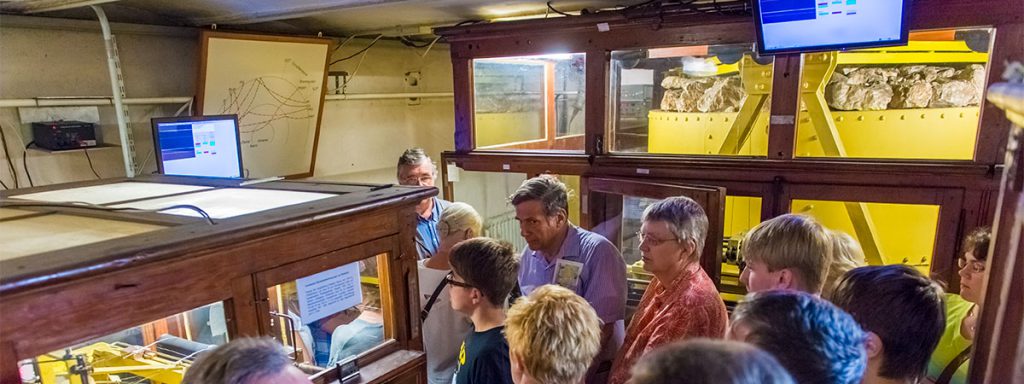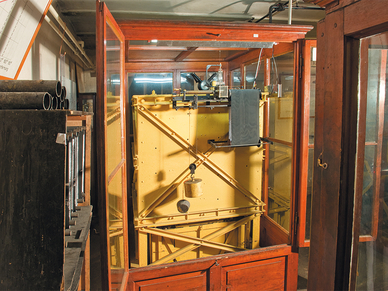
Vertical seismograph
The devices from the workshops G. Bartels and Spindler & Hoyer,
Göttingen, set the standard worldwide until the early 1960s.
(From: Schreiber, 2000) “A mass weighing 1,300 kg, consisting of a steel box filled with barite, is suspended on eight spiral springs, four each in two parallel shafts clad with steel sheet. A specially constructed lever system causes astaticism, which is why the system features a natural period of about 3.5 s and about 230-fold magnification; an air damping system is available as well.
Active since 1905
To avoid temperature effects, the seismograph, just like the two horizontal seismographs, is protected by a glass case. The seismograph was built jointly by the companies G. Bartels and Spindler & Hoyer, Göttingen, between 1904 and 1905. Since then, the instrument has been recording seismic movements at a writing speed of 16 mm/min virtually without any interruptions. Just like the astatic pendulum, it is the prototype for similar instruments at many observatories; whereas twelve of the former instruments were constructed by 1925 in Germany and Austria alone, only five of the vertical seismographs were built, as is apparent from an overview in the Journal of Geophysics on 1924/25, page 285-297.”



